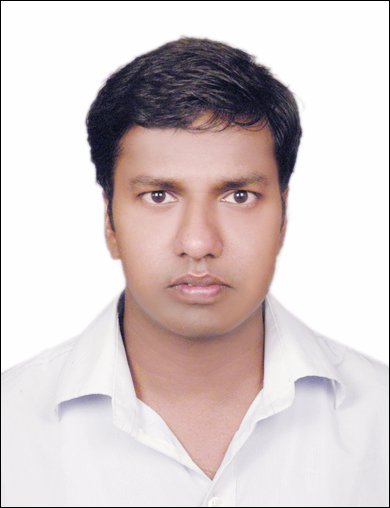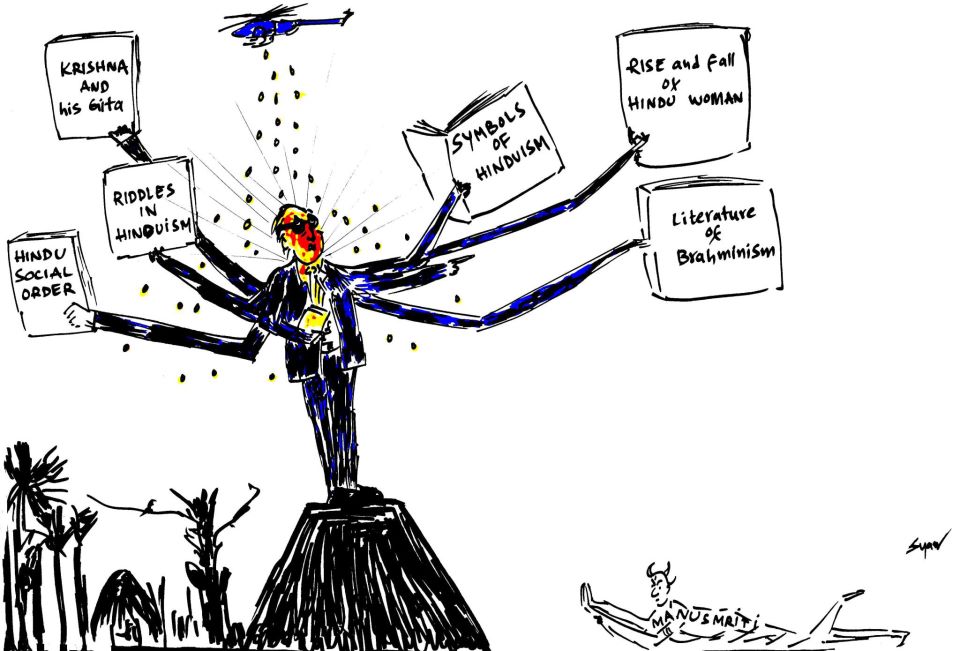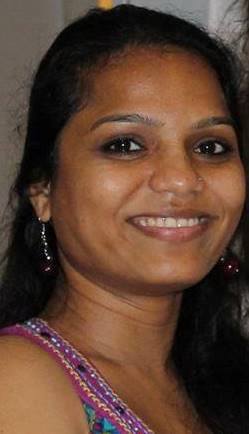Dinesh Maurya
 Earlier Forbesganj (Arariya, Bihar) and recently Nalanda (in Bihar) and Paramakudi (Tamil Nadu) are some examples of atrocities on the oppressed people directly involving the state machinery in the name of law and order. But before going into details, it is first necessary to know what does atrocity mean?
Earlier Forbesganj (Arariya, Bihar) and recently Nalanda (in Bihar) and Paramakudi (Tamil Nadu) are some examples of atrocities on the oppressed people directly involving the state machinery in the name of law and order. But before going into details, it is first necessary to know what does atrocity mean?
The term atrocity, is used some times as a synonym for tension, conflict, antagonism, violence etc., Atrocity is conceptually closer to conflict and more so to violence. Violence or social violence is connected with physical or social harm wherein the person looks to achieve his or her goals by injuring or completely eliminating others or their interests. Finally, atrocity is the net result of violence of the strong over the weak. In India, “Atrocity” has not been defined in any law and therefore the Government has been using the expression “crimes against the SC and ST”.
Since 1974, on the basis of the data collected by Ministry of Home Affairs, the ‘atrocities’ on SCs and STs might be classified into four categories, viz, murder, grievous hurt, arson and rape.
Sexual exploitation of their women folk, murder, arson, gang-rape etc., such kinds of atrocities broadly demonstrated the acts of the feudal minds and colonial hangovers of the upper caste in the villages. This means those crimes which are physical in nature and cognizable offences have been treated as atrocities. A large number of crimes which have socio-psychological impact against these people (SC/ST) were not treated as atrocities.
Schedules Castes and Scheduled Tribes (Prevention of Atrocities) Act, 1989
In 1989, Government adopted an Act known as SCs and STs (Prevention of Atrocities) Act, 1989, which widely covered the socio-psychological dimensions besides the physical or psychological one of crime against the SC/STs; (detail-Clause 3(1)-i-xv and 3(2)-i-xv and 3(2)-i-VII). The atrocities, at the social level, may range from addressing an SC/ST person by the caste name. Article 17 of the Indian Constitution guaranteed abolition of the practice of untouchability, but the segregation of dalits persists even today, particularly in rural areas with regard to access to places of worship, housing, hospitals, education, water sources, markets and other public places, which includes burial grounds and other common property resources in the villages. The scheduled castes suffer both civil and religious disabilities such as restrictions on use of wells, tanks, etc. and debarring them from entering temples, burial grounds and other institutions.
The atrocities committed against Scheduled Castes and Scheduled Tribes include:
- Using abusive/filthy language,
- Individual and group assault,
- Threatening/harassing,
- Waylaying,
- Destroying their crops,
- Throwing them out of their villages,
- Arson,
- Molestation,
- Rape and murder,
- Parading naked or with painted face or body of members of SC/STs,
- Assaulting a SC/ST women with intent to dishonour or outrage their modesty,
- Using a position of dominance to sexually exploit a SC/ST women,
- Force feeding of obnoxious substances to members of SC/STs,
- Dumping excreta or carcasses in the inhabitation area/premises of SC/STs,
- Forcing people of SC/STs to do forced or bonded labour,
- Dispossessing members of SC/STs of their land, and forcing them out from their homes,
- Preventing members of SC/STs from voting,
- Corrupting or fouling the water source of SC, ST people,
- Publicly humiliating SC, ST people,
- Using fire or explosives to hurt Scheduled Castes/Scheduled Tribes and damage their properties,
- Fabricating evidence, in order to convict innocent Scheduled Castes/Scheduled Tribes
Those are some of the activities termed as atrocities by the Scheduled Castes and Scheduled Tribes (Prevention of Atrocities) Act, 1989.
Changing Society and Its Effects
Traditionally, the economic dependence, social neglect, lack of external contacts and lack of social and political awareness were some reasons for their misery. But in modern times the reasons behind increasing number of atrocities cases are: the growth of education & living standards, exposure to outside experiences and social and political awareness which provides the confidence and resistance power to fight against exploitation and cruelty. There are three main causes that have been identified for committing atrocities –
(1) Disputes over possession of surplus land allotted to dalits by the Government,
(2) Non-payment or under payment of prescribed agricultural wages to them and,
(3) Resentment against growing social and political consciousness among them.
Earlier, atrocities on SC/ST were committed by upper caste people because these oppressed (SC/ST) groups were laborers (voluntary or bonded) working for them. The OBCs (other backward castes) were not economically and politically dominant and there was not much difference in their life style from that of dalits. The only difference was, where former (OBC) were engaged in manual activities mostly on their own fields, while the latter (SC/ST) worked as laborers. But after Zamindari abolition act, Dalits also got some land, so this difference was minimized to some extent. The result was that the atrocities on dalits are either committed by Upper caste (OBC are abettor through helping) or OBC (Upper caste are abettor as instigator). Among OBCs, not all but some politically and socially empowered castes (like Yadav, Kurmis and Koiries in Bihar; Yadav, Kurmies in U.P., Kunbis in Gujarat and Maharastra) are involved in these kinds of atrocities.
The reason behind this change
After Zamindari Abolition Act, Upper caste people’s lands ware transferred to SC/ST. So all communities get some land more or less.
Education and social awareness makes dalits more confident and conscious about their rights and dignity, but upper and backward castes (OBC) have not changed their mentality and approach with reference to SC/ST.
So the tussle or conflict has increased the violence and atrocities against SC/ST. But some new factors have also changed the struggle between three communities (Upper caste, OBC and SC/ST).
After implementation of the Reservation Policy in 1992, when the policy was also applied to OBCs, the struggle of OBC and SC/ST were similar and both have been struggling for a fair and proper representation in every body of state machinery and administration (Legislative, executive, judiciary, media and other economic and social power bodies). They were discriminated in the same Brahmanical, feudal state machinery dominated by upper caste social groups.
The social movement for an egalitarian society (like movements by Jyotiba Phule, E.V. Ramaswami Periyar, Dr. B.R. Ambedkar) has influenced the mentality and approach of OBC/SC/ST and they are trying to come together and fight against these Brahmanical and feudal forces and also against state machinery dominated by upper caste people.
Crime does take place in the process of change and particularly so when radical shifts take place in the traditional social and power relation. The oppressed who question social relations become its victims. The legacy of caste-ridden feeling is like a virus, which has infected generation after generation and more than 20 crores of the people of the country are victims of atrocities or untouchability in some form or other which leaves their psyche permanently scarred and demoralized.
State Responsibility Vs State Atrocity
Scheduled Castes and Scheduled Tribes (Prevention and Atrocities) Act, 1989 empowers the state governments for setting up of special courts for the purpose of speedy trial of the offences related to the atrocities on the scheduled cases/scheduled tribes. (Section 14)
Whoever, being a public servant but not being a member of a Scheduled Caste or a Scheduled Tribe, wilfully neglects his duties required to be performed by him under this Act, shall be punishable with imprisonment for a term which shall not be less than six months but which may extend to one year. (Section 4)
The Central Government shall, every year, place on the table of each House of Parliament a report on the measures taken by itself and by the State Governments in pursuance of the provisions of this section (Section 21(4)).
Nothing in section 438 (Anticipatory Bail) of the Criminal Procedure Code shall apply in relation to any case of the code involving the arrest of any person on an accusation of having committed an offence under this Act. So anticipatory bail cannot be given in the cases of atrocities on SC/ST.
(A) Wilfull Negligence by State Machinery
The National Commission for Scheduled Castes and Scheduled Tribes in their special report (April, 2000) remarked that delayed justice is considered as denial of the justice to the victims of atrocities. It has also been revealed by the Commission that the delay in lodging the first information report, lodging false FIR due to enmity, false reports, contradiction in the statements of complainants and witnesses, absence of proper scrutiny of the cases of prosecution before filing challan in courts, witnesses and complainants turning hostile and compromise between accused and victims outside the court are some of the important factors which lead to the acquittal of the large number of accused of atrocities in our country. There is a widespread public mistrust of the police among the masses, specifically the downtrodden that the police work under the influence of the politically and economically powerful upper caste people, and harass the socially backward sections of the society.
Generally, the people of upper caste with feudal attitudes are always eager to tie up with the police (which is also dominated by upper caste) for their selfish ends of increasing their exploitative power base and hold over the society. It is because of the mistrust of the police that many victims of atrocities do not report crimes for fear of reprisals by the dominant castes and their nexus with the police. This social and economic segmented base and prevalent feudal and casteist notions have further facilitated the continuation of such practices of atrocities on the scheduled caste people in our society.
(B) Direct involvement by State Machinery
In the name of maintenance of law and order the state machinery always use police force to suppress the demands of rights or organization of social movements by the oppressed people. The atrocity on oppressed people by state machinery is not new. In early times the atrocity on Phoolan Devi (former M.P.) was not done by upper castes and by the police (again upper caste). These are some new cases: Farbisganj (Arariya-Bihar), Nalanda (district in Bihar) and Paramakudi (Tamilnadu) are prime examples of atrocities on oppressed people direct involvement of state machinery.
Police beat up protesting villagers in Nalanda
7 killed in Tamil Nadu police firing
4 killed in Bihar as police open fire on villagers
After liberalisation for the purpose of rapid exploitation of natural resources and raw materials, the exploitation, atrocities and displacement of oppressed people (SC/ST) have become a more common feature of the capitalist and upper caste dominated state machinery. In the name of ‘Oppression Green Hunt’ the state machinery has committed numerous atrocities on the oppressed people. Lastly the Supreme Court observed it as civil war sponsored by State machinery.
Representation of Oppressed (OBC/SC/ST/Women)
1. There is a need for equal and effective representation of oppressed social groups (OBC/SC/ST/women) in the police, media and judicial administration so that any dominant social group cannot utilise the administrative power for committing atrocities and suppressing other social groups.
2. The police should respect the worth and dignity of every individual, especially in our society where people are not treated equal, are divided on the basis of social hierarchy (following Manusmriti).
3. There is a need for a separate agency for investigation and dealing with the cases of atrocities on the oppressed castes. The agency should consist of well-trained personnel who are experts in criminal behaviour, human behaviour and have the in-depth knowledge of the social fibre of our society.
4. The National and State Commission of SC and ST should extended to every district of the country and the Head of this office should have similar powers as that of the District Magistrate and the officer should belong to the oppressed community. A team of five media person should also be part of this office so that the atrocities and exploitation should come in the cognizance of people and the government.
~~~
The author can be contacted at dinsing03@gmail.com










